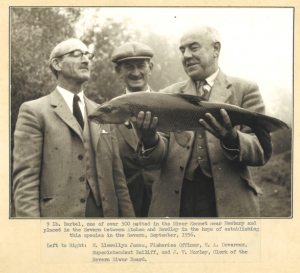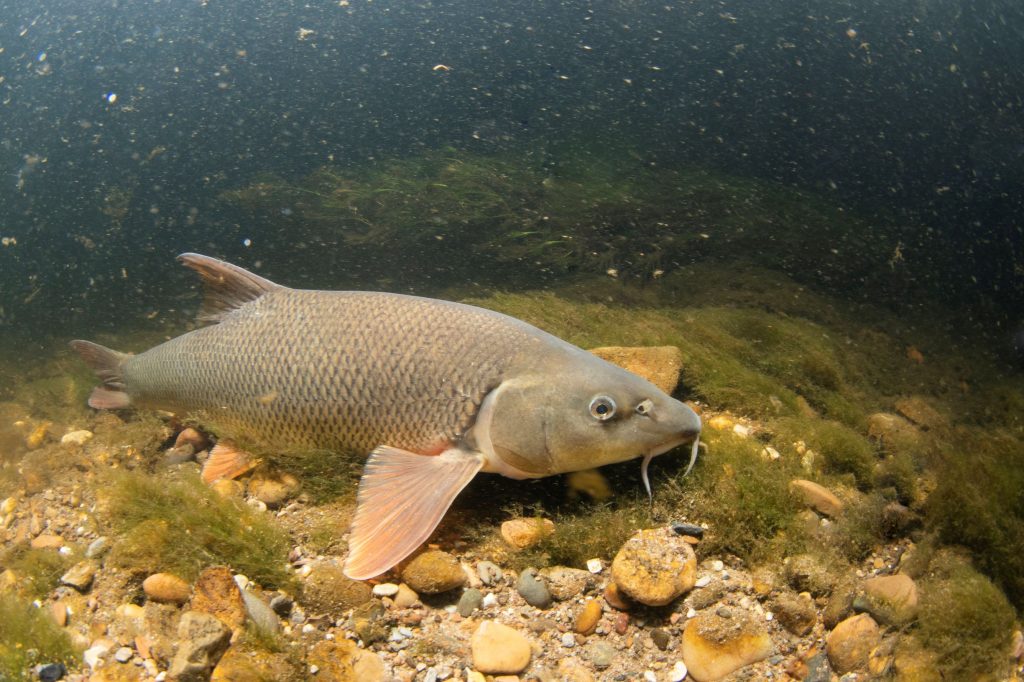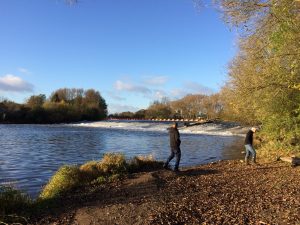Characteristics
Barbel are a powerful, ‘bullet’ shaped fish that are ideally suited to live in fast flowing water. The name barbel comes from the Latin Barbula which means Little Beard. This comes from the four whisker-like features on the corner of its mouth. These feelers (which include taste buds) are ideal for helping them search for their food that lives in and amongst rocky, gravelly substrate. Many fish species have these barbula, but these are very prominent and more visible in barbel than in most other fish species.
Diet
Barbel are predatory and mainly feed on high protein invertebrates. Like most bottom dwelling species their diet largely consists of shrimps, nymphs and larvae. Once mature barbel are able to tackle larger prey like Crayfish and have been known to eat small fish. Adult barbel can grow very large (up to 1.2m in length) and are considered by anglers to be very elusive, yet hard fighting and unpredictable, therefore an extremely rewarding fish to catch. Because of their eventual size and power mature barbel are rarely predated.

A Barbel Being Introduced to the Severn in 1956




